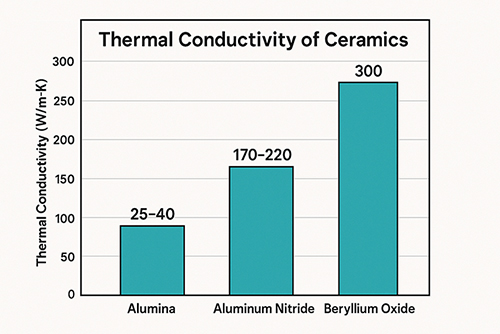Silicon Carbide Burner Nozzles: Enhancing Industrial Combustion
Introduction
In the realm of industrial combustion, efficiency, durability, and resistance to extreme conditions are paramount. One key component that addresses these requirements is the silicon carbide burner nozzle. Silicon carbide (SiC), a compound of silicon and carbon, has emerged as a material of choice for various industrial applications, and its application in burner nozzles is no exception. This article delves into the characteristics, advantages, and applications of silicon carbide nozzles, shedding light on how this advanced material is revolutionizing combustion processes.
![]()
Characteristics of Silicon Carbide
Silicon carbide exhibits exceptional properties that make it an ideal material for burner nozzles in demanding industrial environments. One of its standout features is its ability to withstand extremely high temperatures, surpassing 2000 degrees Celsius.
This resistance to high temperatures is crucial in situations with high heat production, such as furnaces, kilns, and certain boilers. It is important because it allows these objects to withstand extreme temperatures. For example, in furnaces, kilns, and certain boilers, where a significant amount of heat is generated, this resistance is necessary.
The material's impressive thermal conductivity is another noteworthy characteristic. Silicon carbide facilitates efficient heat transfer, enhancing the overall performance of burner systems. This property contributes to improved combustion efficiency and heat generation in industrial processes.
Moreover, silicon carbide is known for its hardness and abrasion resistance. It exhibits durability in the face of wear, ensuring a longer lifespan and reduced maintenance requirements compared to some alternative materials. This abrasion resistance is particularly beneficial in applications where particles or abrasive substances are present in the combustion environment.
Manufacturing Process
The manufacturing process of silicon carbide burner nozzles typically involves methods such as reaction bonding or sintering. In the reaction bonding process, silicon and carbon are combined in the desired proportions, and the mixture is subjected to high temperatures in the presence of a reactive gas. This results in the formation of silicon carbide with a dense and durable structure. Sintering, on the other hand, involves compacting silicon carbide powder at high temperatures without the need for reactive gases.
Applications of Silicon Carbide Burner Nozzles
SiCnozzles find applications in a variety of industrial settings where the demand for high-temperature resistance, abrasion resistance, and durability is critical. Some notable applications include:
- Industrial Furnaces: Silicon carbide burner nozzles are widely employed in industrial furnaces, where they contribute to efficient combustion processes at elevated temperatures. The material's ability to withstand extreme heat and resist wear makes it well-suited for these demanding environments.
- Kilns: In the field of ceramics and other heat treatment processes, silicon carbide burner nozzles play a key role. The high-temperature resistance and durability of these nozzles make them ideal for applications involving the firing and curing of materials in kilns.
- Metal Heat Treatment: Industries involved in metal heat treatment processes, such as annealing and hardening, benefit from the use of silicon carbide burner nozzles. The material's resilience to thermal stress and abrasion ensures reliable and consistent performance in these applications.
- High-Temperature Boilers: Certain types of boilers that operate at extremely high temperatures utilize silicon carbide burner nozzles. These nozzles contribute to the efficiency and longevity of the combustion process in such demanding boiler applications.
Advantages of Silicon Carbide Burner Nozzles
The adoption of silicon carbide burner nozzles offers several advantages that contribute to enhanced industrial combustion processes:
- High-Temperature Stability: Silicon carbide's ability to withstand extreme temperatures ensures stability in combustion processes, preventing degradation of the burner nozzle even under the harshest conditions.
- Thermal Conductivity: The excellent thermal conductivity of silicon carbide promotes efficient heat transfer, leading to improved combustion efficiency and heat generation in industrial applications.
- Abrasion Resistance: These burner nozzles resist wear and abrasion, resulting in a longer lifespan and reduced maintenance requirements compared to some alternative materials.
- Chemical Inertness: Silicon carbide is chemically inert, making burner nozzles made from this material resistant to chemical corrosion. This property ensures durability in diverse fuel environments.
- Customizable Designs: Silicon carbide burner nozzles come in various shapes and designs, allowing for customization to suit different burner systems and applications. The specific design influences factors such as spray pattern and fuel atomization.
Further Reading: Silicon Carbide Nozzles in Industrial Processes
Conclusion
Silicon carbide burner nozzles have become indispensable in industrial combustion systems, revolutionizing the way heat is generated and materials are processed. Their exceptional properties, including high-temperature resistance, thermal conductivity, and abrasion resistance, make them a preferred choice for applications where efficiency and durability are paramount.
Click here to inquire about ACM's high-quality silicon carbide nozzles.
{{item.content}}
LEVE A REPLY
{{item.children[0].content}}
{{item.content}}
LEAVE A REPLY
SUBSCRIBE OUR NEWSLETTER
- Boron Nitride in Cosmetics: Enhancing Performance and Sensory Appeal
- Maximize MOCVD Yield and Purity with Hexagonal Boron Nitride Setters
- What Are the Advantages and Uses of Boron Nitride Ceramic Sheet?
- The Compression Annealing Advantage for Pyrolytic Boron Nitride
- Beyond Insulation: The Surprising Spectrum of Ceramic Thermal Conductivity











